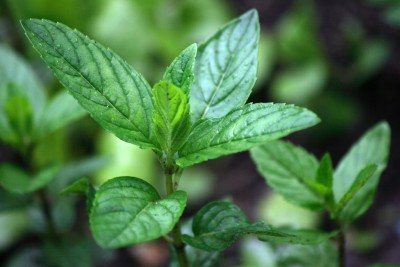Peppermint - Mentha piperita

Common Names: peppermint, mint, Mentha piperita, mentha, spearmint, garden mint, balms, nana, peppermint herb, international: Mentha piperita
Latin Name: Mentha piperita
Origin: Africa, Asia, Australia, Europe, South America, North America
Short Introduction
All types of mint prefer moist environments close to water sources with partial shade, but they can also thrive in full sun. Favorable weather and higher temperatures support the formation of essential oils. Seedlings should be chosen only from healthy stands in spring (and can also be divided in autumn) by breaking apart old clumps. They are planted in rows with 20–30 cm spacing. The entire above-ground part of the plant is harvested once it reaches 30 cm in height, or just the leaves can be picked. Beware of peppermint’s tendency to spread quickly—it can easily become invasive.
For distillation, it is preferable to use slightly wilted plants (freshly harvested ones yield less optimal results). Dry mint in airy, shaded locations.
Detailed Description
Peppermint is a traditional herb widely used in medicine and culinary arts for its aromatic qualities and health benefits.
Botanical Information
Peppermint (Mentha piperita) is an aromatic herb that usually grows between 10 and 90 cm in height. It features both branching above-ground stems and an extensive underground root system. The stems are square and often hairy, while the leaves are opposite, lance-shaped or rectangular, and finely toothed along the edges. Leaf color ranges from deep green to gray-blue to purplish hues. Peppermint produces white or pink flowers, and its fruit is a small nutlet containing one to four seeds.
Origin and Distribution
The mint family comprises about 18 species. These were classified as a single species until 1696, when British botanist John Ray divided them. Some mints grow wild, while others are cultivated and bred. Peppermint is believed to have originated in Europe and Asia, spreading rapidly worldwide due to its vigorous growth and ability to quickly colonize new areas. Mint has been used since ancient times; Egyptian texts such as the Ebers Papyrus praise its calming effects on the stomach. In Palestine, mint was used as a form of tax payment, as noted in the Bible (Luke 11:42). Greek mythology tells the story of the nymph Mintha, transformed into the mint plant by a jealous Persephone—giving the genus its Latin name. Peppermint became one of the most widely used herbs and is found in nearly every herbal compendium.
Usage / Dosage
In cooking and food preparation, both fresh and dried peppermint leaves are used because they contain menthol. The leaves have a refreshing, sweet flavor with a cooling aftertaste. Peppermint is commonly added to beverages, syrups, candies, and ice creams.
In North Africa, it is a staple in the refreshing Tuareg tea, and no mojito cocktail would be complete without peppermint. Peppermint oil and menthol are also key ingredients in toothpaste, chewing gum, mouthwashes, beverages, and disinfectant waters.
Traditionally, peppermint is used to relieve stomach and chest pains, and at home, it’s a go-to for soothing the stomach. Since ancient times, a mint sprig was served after meals to promote better digestion. During the Middle Ages, peppermint was also used for cleaning and whitening teeth. In folk medicine, it is employed as a diuretic, to calm irritated skin (especially with camphor after insect bites), relieve abdominal pain and lack of appetite, ease digestive discomfort, reduce nasal congestion and sore throat from colds, and as a natural insect repellent.
Compared to placebo, peppermint oil capsules have proven effective for relief in up to 75% of patients suffering from irritable bowel syndrome. Researchers speculate on peppermint’s potential as a universal option for this condition, as it also affects specific receptors in tissue fibers, helping to alleviate gastrointestinal pain.
German medical sources recommend peppermint oil as a spasmolytic agent (relieving cramps and pain in the digestive tract and bile ducts). It’s widely used to soothe respiratory passages during inflammatory conditions and to disinfect oral mucosa. The oil is also a component in mixtures designed to reduce muscle pain and has properties that stimulate bile acid production.
Applying peppermint oil to the chest or near the face is recommended for young children to help increase airway volume, decrease bronchial spasms, and provide relief from acute respiratory issues associated with allergic reactions as well.
In general, products containing peppermint essential oil should not exceed 1% of the total composition, though toxicological studies vary by species and dosage.
Active Compounds
Peppermint contains a high concentration of menthol. The essential oil also includes menthone and menthyl esters. Dried peppermint has about 0.04% essential oil content, with menthol making up 10–50% of oil volume. Peppermint oil may also contain small amounts of limonene, caryophyllene, and pinene.
Traditional Dosage
Peppermint can be enjoyed as an infusion, made from dried or fresh leaves and steeped for about 10–15 minutes; drink this 2–3 times daily. Pure essential oil can be added to tea or water (10–15 drops) or onto a sugar cube. The oil may also be applied directly to the skin and gently massaged in.
